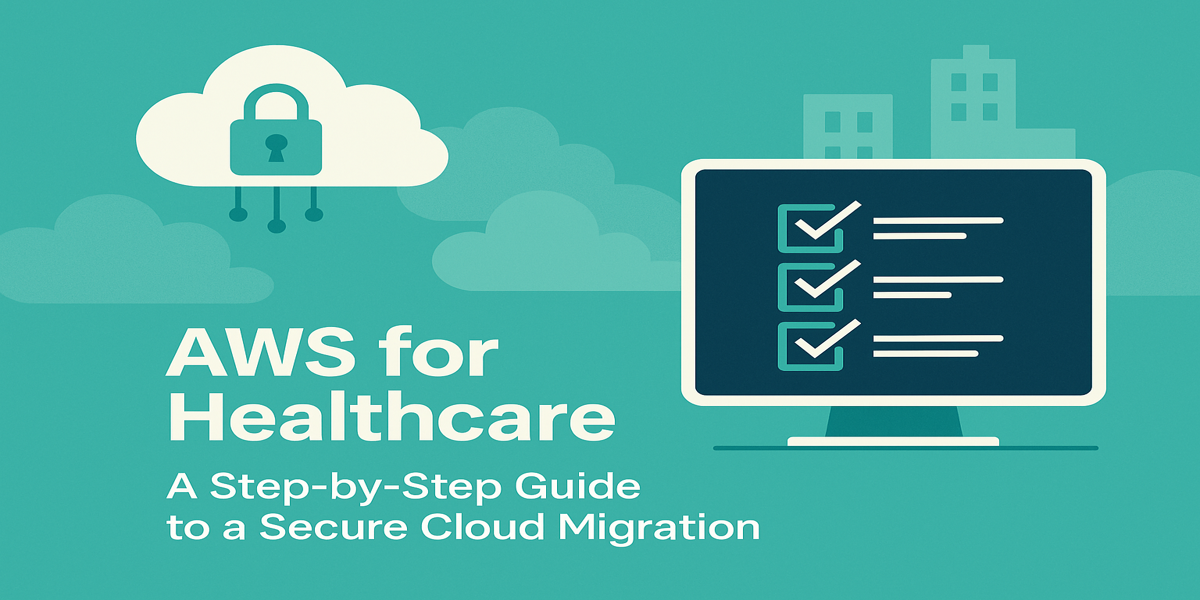Migrating healthcare infrastructure to the cloud isn’t just a technical move—it’s a strategic transformation. With patient data, compliance frameworks, and security rigor at stake, the wrong migration can expose you to audits, breaches, and broken trust.
When it comes to cloud strategy in healthcare, AWS stands out as the most mature, HITRUST-aligned option. Let’s walk through the step-by-step process—spotting potential pitfalls, integrating security best practices, and understanding how Cloudticity accelerates the journey without compromising compliance.
1. Plan: Build Clear Stakeholder Alignment First
One of the biggest causes of stalled cloud migrations is unclear ownership. Migration projects often hit roadblocks because stakeholders—from engineering, compliance, to business units—aren’t aligned on scope and objectives.
What to do:
Have all teams at the table; IT, security, compliance, and operations. Define which applications, teams, and data move first, and align on timelines. Ensure sponsors are empowered to make decisions, and that non-technical departments understand the value: better uptime, improved scalability, reduced compliance headaches.
2. Assess: Inventory, Prioritize, and Choose AWS-Ready Workloads
Begin by taking inventory of applications and data. In a stressful environment like healthcare, legacy applications and EHR systems often lurk with hidden dependencies.
What to do:
Use tools to map application dependencies and identify which services can be lifted-and-shifted ("rehost") versus which require refactoring. Prioritize:
- High-impact or high-risk applications (e.g., those processing sensitive patient data)
- Applications with foreseeable upgrades or end-of-life servers
- Systems that will gain the most from AWS managed services like RDS and S3
3. Mobilize: Build a Secure, Compliant Foundation
AWS recommends moving at scale only after establishing a compliant baseline. Healthcare demands providers like AWS Config, CloudTrail, KMS, and identity infrastructure be configured correctly from day one.
What to do:
Set up an AWS landing zone with strong guardrails: multi-account structure (dev/stage/prod), centralized IAM/encryption/network segmentation, and logging/monitoring by default. Implement automation so that configurations are enforced and non-compliance is flagged in real time.
4. Migrate: Execute Lift-and-Shift or Replatforming
AWS outlines the “7 Rs” of migration, with lift-and-shift (rehost) often being the fastest way to move workloads initially according to AWS Prescriptive Guidance.
What to do:
Use AWS Application Migration Service or VM Import tools to move workloads. For databases, leverage AWS DMS or RDS migrations. Then plan a replatform or refactor phase to adopt AWS-native services.
5. Secure & Validate: Ensure Compliance During Migration
Security must be baked into every phase. AWS recommends threat modeling and tools like GuardDuty, Security Hub, and Config Rules for healthcare workloads per AWS guidance.
What to do:
Run threat models aligned to your architecture. Enforce TLS, IAM least privilege, encryption at rest/in transit. Perform penetration testing and set up alerts for misconfigurations or drift.
6. Optimize & Modernize: Cut Costs and Increase Resilience
Migration is step one. AWS research shows lift‑and‑shift is easiest, but “realizing planned savings” comes from right‑sizing, autoscaling and managed services, as detailed in AWS' Rehost Migration Playbook (Part 4).
What to do:
Analyze cost and performance using Cost Explorer and Compute Optimizer. Use Reserved Instances, optimize storage, leverage autoscaling, and implement tagging and budgeting policies to maintain efficiency.
7. Sustain: Embed Continuous Compliance and Cloud Native Practices
Migration shouldn’t be a one-time effort; AWS encourages embedding best practices in DevOps pipelines per AWS HIPAA compliance guidance.
What to do:
Automate compliance checks in CI/CD. Detect drift with Config; auto-remediate misconfigs; tag workloads; schedule regular audits. Use Cloudticity Oxygen™ or similar tools to streamline HITRUST/HIPAA evidence collection.
Common Migration Pitfalls in Healthcare
- No stakeholder alignment leads to deadlocked scope
- Rushed lift‑and‑shift without a security foundation introduces risk and compliance gaps
- Skipping POCs/artifact validation embeds systemic issues later
- Ignoring post-migration optimization misses cost savings and resilience gains
How Cloudticity Makes It Safer—and Faster
At Cloudticity, we partner with healthcare organizations through every phase:
- Define migration strategy tailored to your compliance needs
- Secure your AWS landing zone with built‑in, auditable guardrails
- Automate drift detection and HITRUST/HIPAA evidence collection
- Modernize your workloads post-migration, minimizing cost and effort
We treat your AWS migration as a transformation, ensuring you’re compliant, fast, and future-ready.
Your Next Step
🎯 Use our Cost of HITRUST Calculator to estimate migration and compliance costs.
📘 Learn what HITRUST certification means—especially in an AWS context.
📆 Speak with a Migration & Compliance Expert—30 minutes, no pressure, real results.

